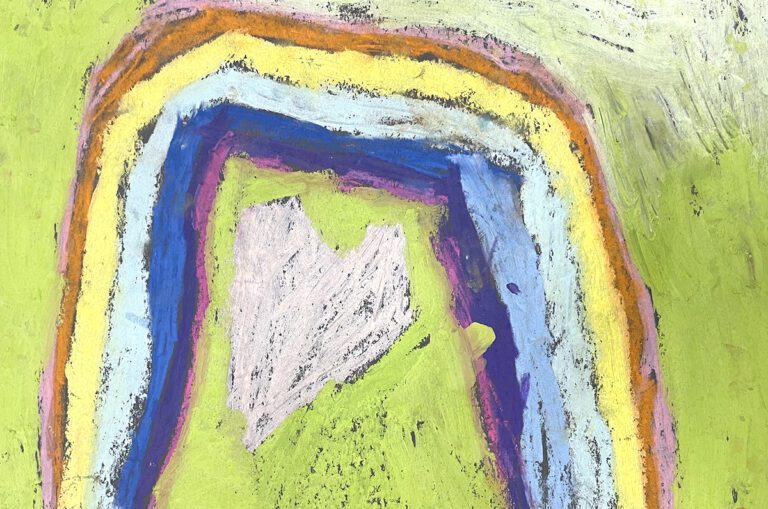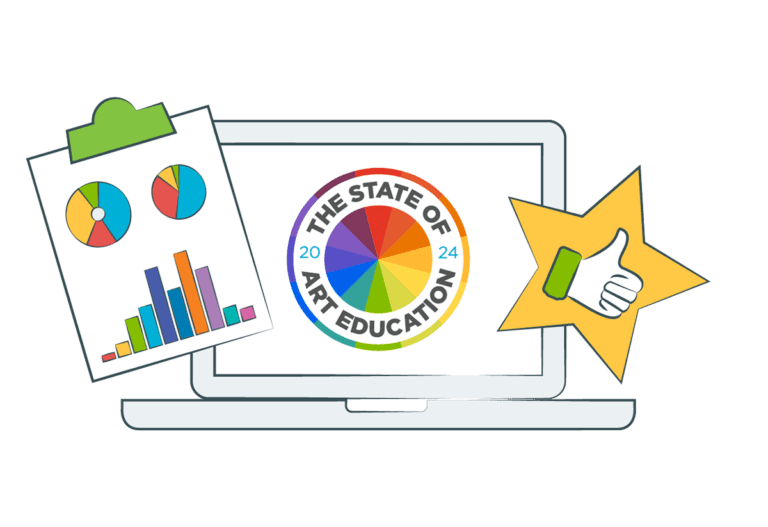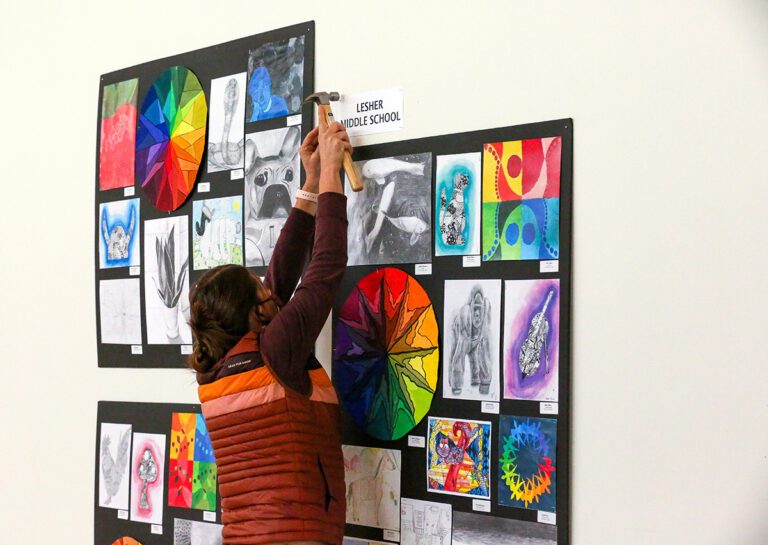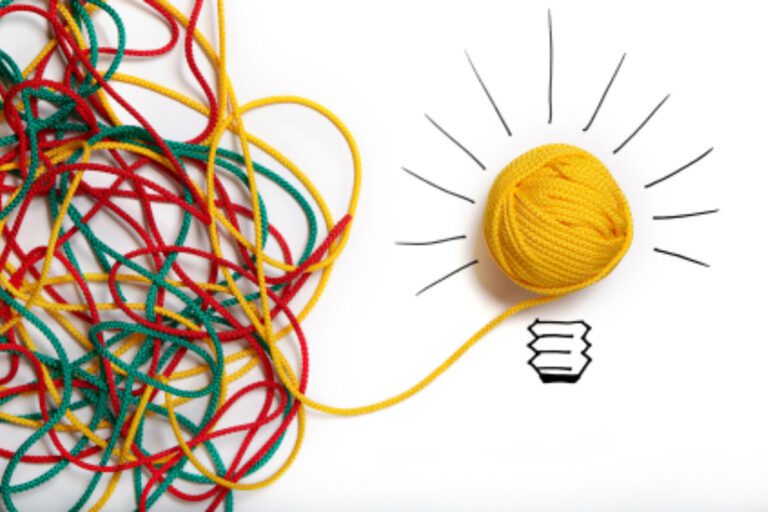Let’s discuss the dreaded statements you hear every now and again in the art room. The statements holding kids back from working. The statements showing their lack of confidence or lack of desire. The statements, unfortunately, we hear all too often.
On a good day, you might only cringe reflexively.
On a bad day, you begin to question everything.
Remember, it’s good to empathize with students’ feelings – even those of inadequacy once in a while – but we must remain rays of positivity for our students!
Here are some solid “go-to” responses for the next time you hear students struggling.
SCENARIO #1 – “I Can’t Draw.”
Student: I can’t draw.
Teacher: What lies between “Can’t” and “Can”? (Prompting them to refer to the DIY poster).
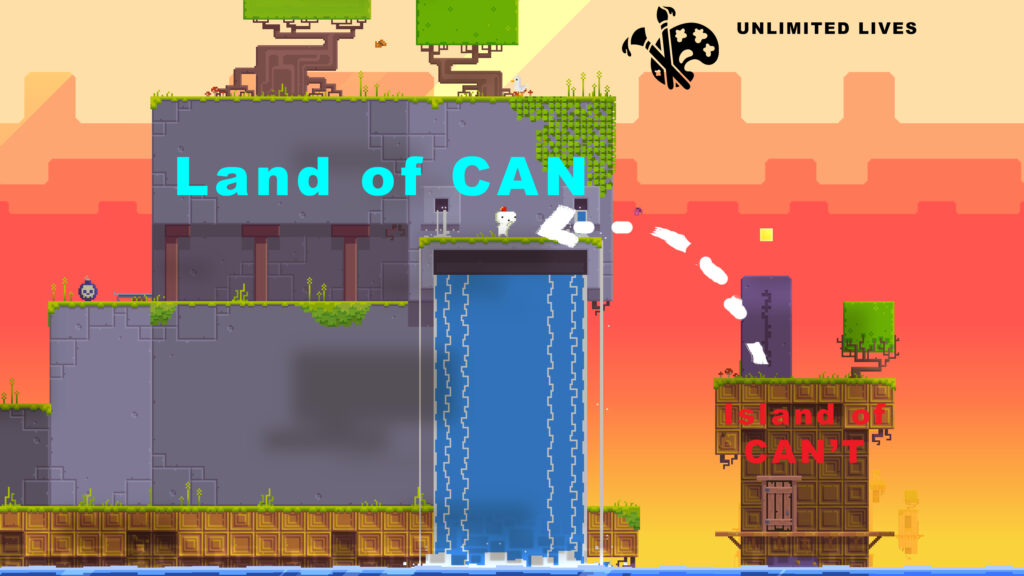
Student: Um…Trying?
Teacher: Right! It takes courage to try, but I believe in you. Take the leap, I’m here to catch you if you falter. Then we’ll dust ourselves off and try again. It’s like having another life in video games. You never really lose, you start again when you need to. You don’t quit a video game when you run out of lives, do you?
*Remember, it’s key they give you the answer. Telling students doesn’t work nearly as well as hearing themselves say the word. It gives them ownership over the choice to see things differently.
SCENARIO #2 – “I’m Not Creative.”
Student: I’m not creative.
Teacher: (Behave as if you’ve just caught something in your hands. Peek into your clasped hands excitedly.) I got it, I can’t believe it!
Student: What is it?
Teacher: Well, it depends. See, it looks different to everyone. It’s an imagination spark. I see it as sparkly and rainbow-colored… kind of like a bouncy pom-pom that spurts out miniature fireworks. Do you want to take a look and tell me what you see?
Student: Sure! (If they appear uninterested, let students nearby motivate them by trying their hand at observing and commenting on how they perceive it first.)
Teacher: So, what does it look like to you?
Student: (Gives their creative response.)
Teacher: See, I knew you were creative! You just demonstrated what an incredible imagination you have! Just in case you doubt yourself again maybe you should keep this spark safely in your pocket. (Insert optional wink here.)
SCENARIO #3 – “I don’t have any ideas.”
Student: I don’t have any ideas.
Teacher: None? Wow, this is bad. (Look seriously concerned and pensive.) I think this is a job for the IDEA medics. (Make a fake ambulance alarm sound and grab two nearby students.)
Say to the other students, “We need you STAT! (Insert student’s name) has NO IDEAS! Can you save him?” (Two other students are prompted to whisper an idea each into the struggling student’s ear.)
Student: (Listens appreciatively.)
Teacher: Thank goodness they saved you! Be sure to show them your gratitude by using their ideas as a starting point. Remember to make the idea your own by making slight adjustments or enhancements.
SCENARIO #4 – “It’s Not Like Yours.”
Student: (Frustrated) It doesn’t look like your example!
Teacher: Oh, thank goodness! (Look relieved) I was worried it might. That would be terrible.
Student: Huh?
Teacher: Well, if it looked exactly like mine, why would you bother making it? I must say, I wish I had thought to (insert compliment/strength of student’s work here). Your piece is really unique. No one else (insert observation here).
Student: Uh, thanks.
*Remember, this throws them off balance. They don’t see it coming. I think they expect you to simply say, “It looks fine, keep working.” Celebrating the individuality of each student’s art will encourage students to see variations as indicators of strength rather than personal failings. Before long, this cry will be a thing of the past.
Yes, most of these involve some dramatics on your part. But remember, we work with children in a creative capacity! They respond to silly voices, humor, and levity.
Levity, in fact, is often the best band-aid in these dark moments.

Go forth and turn those doubts into dos. At times, being an art teacher reminds me of being a cheerleader. Our job is to believe in our students even when they don’t believe in themselves.
What do you dread hearing in the art room most?
How do you deal with these types of statements? How do you redirect them?
Magazine articles and podcasts are opinions of professional education contributors and do not necessarily represent the position of the Art of Education University (AOEU) or its academic offerings. Contributors use terms in the way they are most often talked about in the scope of their educational experiences.

